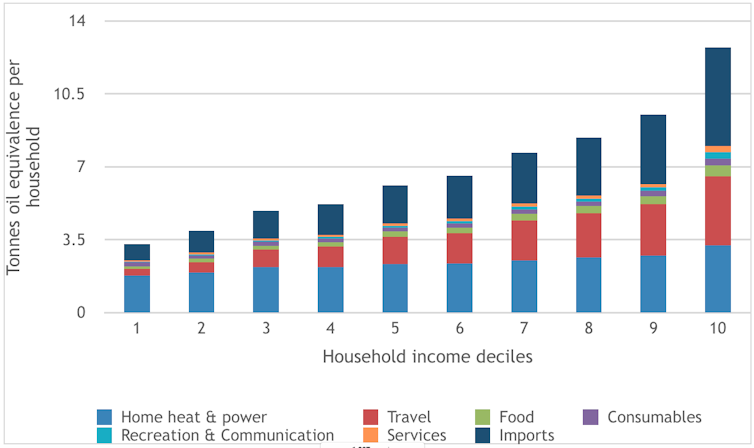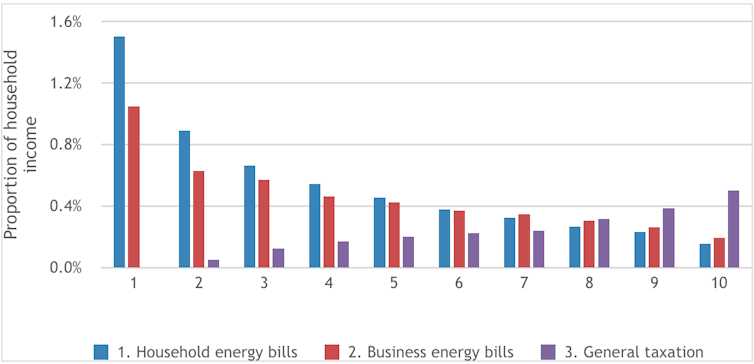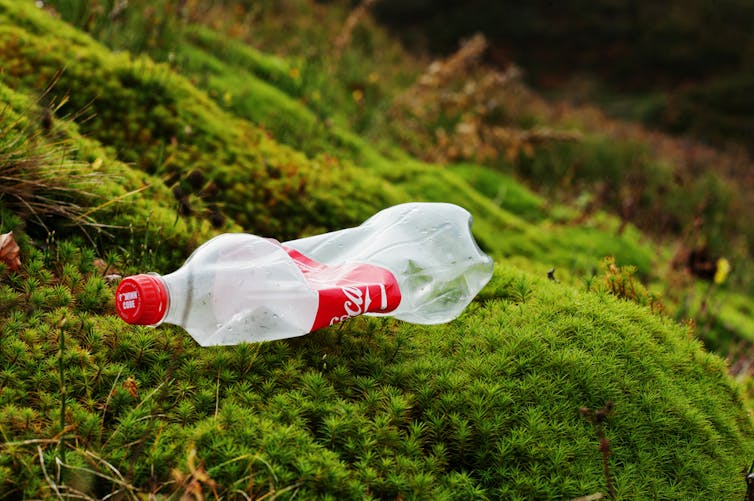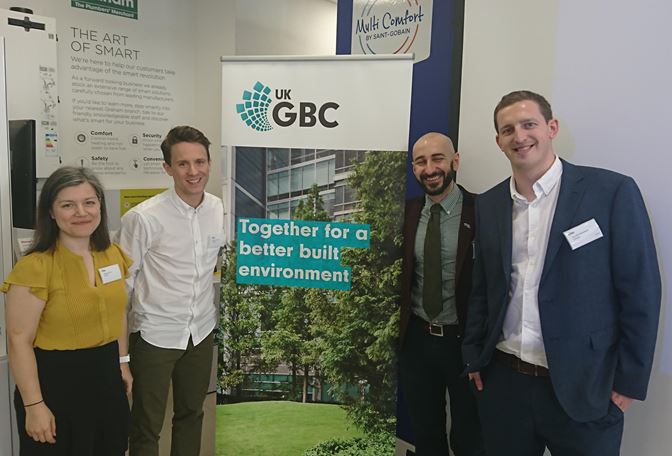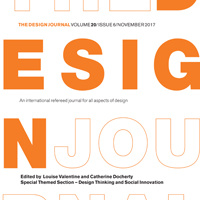Dr Samuel J.G. Cooper is a Research Associate in the Department of Mechanical Engineering. Professor Geoffrey P. Hammond is Professor of Mechanical Engineering at the University of Bath, and was Founder Director of its Institute for Sustainable Energy and the Environment.
The Climate Change Challenge
Human development is underpinned by energy sources of various kinds that heat, power and transport its citizens in their everyday lives. But, while energy supplies and technologies underscore continued economic development, they also give rise to unwanted side-effects, such as the prospect of global warming due to an enhanced greenhouse effect induced by fossil fuel combustion. The British Government has introduced a bold, legally binding target of reducing the nation’s CO2 emissions overall by 80% before 2050 in comparison to a 1990 baseline in their 2008 Climate Change Act. Achieving this carbon reduction target will require a challenging transition in Britain’s systems for producing, delivering and using energy that is not only low carbon, but also secure and affordable; resolving the so-called energy policy ‘trilemma’.
Reducing industrial energy demand and improving resource efficiency could make a substantial contribution towards the UK Government’s 2050 goal of achieving 80% decarbonisation, whilst simultaneously improving productivity and creating employment opportunities. In this context, the British Government released its Clean Growth Strategy in October 2017, although it has a number of identifiable weaknesses. The associated technology roadmaps exhibit quite large uncertainties, and decarbonisation over the long-term will depend critically on the adoption of a small number of key technologies, alongside the decarbonisation of electricity supply. ‘Circular economy’ interventions have the potential to make significant energy savings that are complementary to other energy efficiency measures. But the task for both industrial and policy decision-makers will still be challenging.
The Importance of Industry in Securing a Clean Economy
Industry in the UK accounts for some 17% of total delivered energy and 20% of CO2 emissions. There are large differences between processes – from highly energy-intensive steel production and petrochemicals processing to low-energy electronics fabrication. The former sector typically employs large quantities of (often high-temperature) process energy, whereas the latter tends to be dominated by energy uses associated with space heating. Around 350 separate combinations of sectors, devices and technologies can be identified; each combination offers quite different prospects for energy efficiency improvements and carbon savings, which are strongly dependent on the specific technological applications. This large variation across industry requires tailored solutions for separate industries.
The British Government’s independent Committee on Climate Change (CCC), established under the 2008 Climate Change Act, has advocated deep cuts in power sector operational emissions through the 2020s, with UK electricity generation being largely decarbonised by 2030-2040. In recommending the Fifth ‘Carbon Budget’ for the period 2028-2032, they proposed a 57% fall in greenhouse gas (GHG) emissions below 1990 levels by 2032. However, they viewed industrial decarbonisation as a difficult area in which to secure appropriate savings. There is clearly a need for research aimed at providing better information in support of UK industrial strategy for policymakers, including the potential impact of fuel switching, as well as the identification of difficult sectors and/or processes and areas where investment could be targeted most effectively. GHG emissions are not the only environmental burden that stems from industrial activities. However, ‘carbon footprints’ have become the ‘currency’ of debate in a climate-constrained world.
From Industrial Sectoral Analysis to Strategy
The GHG emissions from UK industry can be split by sector, comprising those from energy use (including GHGs indirectly emitted from electricity use) and process emissions. Industrial sectors with significant process emissions are steel, chemicals, cement, aluminium, glass, ceramics and lime. Information on energy use, emission conversion factors and process emissions can be combined in order to determine the total emissions. This reveals that a number of sectors dominate GHG emissions from the industrial sector, and suggests Pareto-like priorities for decarbonisation: steel (25%), chemicals (19%), cement (8%), food & drink (7%), paper (6%), plastics (6%) and so on. Thus, just six sub-sectors account for 71% of UK emissions. However, the post-2008 economic recession resulted in the ongoing closure of some large plants, particularly aluminium smelters and steel mills. The British Government, led by its Department for Business, Energy and Industrial Strategy (BEIS), released its Clean Growth Strategy (CGS) in October 2017, alongside seven Industrial Decarbonisation and Energy Efficiency Action Plans produced jointly with industrial partners covering different industrial sectors. Thus, the Action Plans contain voluntary commitments to reduce GHG emissions, whilst “maintaining international competitiveness”.
The Minister for Energy and Clean Growth (the Rt Hon Claire Perry MP) regards the CGS as a “march on a decarbonisation pathway” for the UK economy. A novel focus of the strategy is on the notion of growing national income whilst cutting GHG emissions. It is argued that this will improve productivity, create ‘good jobs’ and enhance the earning power of employees at the same time as meeting the climate change and environmental objectives of the UK. The CGS sets out an aim to improve energy productivity by at least 20% over the period to 2030. This will be stimulated, in part, by a Government investment of £162 million in clean growth innovation funding out to 2021 via a new BEIS Energy Innovation Programme, including greenhouse gas removal (GGR) technologies; much of this funding will be earmarked for industrial carbon capture and storage (CCS). Claire Perry also has an ambition to accelerate green finance and regulatory frameworks that will encourage new business models for the UK. BEIS will seek to monitor progress with these interventions via a Clean Growth Inter-Ministerial Group, aided by a new metric – the Emissions Intensity Ratio (EIR), defined in terms of GHG emissions per unit of national income. The Government wants this EIR to fall by 63% between now and 2032. Subsequently, the CGS and associated Action Plans were underpinned by the Government’s Industrial Strategy White Paper published in November 2017, which has as a grand challenge the aim of taking advantage of the “global shift to clean growth” for the benefit of UK industry. The overall emphasis is on improving productivity via the encouragement of innovation, research and development (R&D), and skills training. It envisages a large increase in public investment in R&D, through an Industrial Strategy Challenge Fund (initially of £275 million), together with the commercialisation of its outputs.
Weaknesses in the UK ‘Clean Growth Strategy’
The much-delayed publication of the CGS has been generally welcomed by both industry and civil society groups, including organisations in the energy efficiency and carbon reduction field such as the Carbon Trust and Energy Savings Trust. The CCC also welcomed it as representing a move in the right direction. However, they voiced concern over the vagueness of many of the suggested climate change mitigation actions and the potential reliance by the UK Government on what they regard as ‘flexibilities’ in the 2008 Climate Change Act in order to meet the requirements of the Fifth Carbon Budget targets. The CCC view such flexibilities as “banking and borrowing”, whereas they believe that future carbon budgets out to 2032 at least should be met by way of domestic action. They regard banking emissions from the overachievement in emissions reductions under the Second and Third Carbon Budgets as a retrograde step. It could put at risk the UK commitment to achieving the goals of the Paris Agreement, which includes a much greater challenge of moving towards 1.5°C global warming than the 2°C target in place when the CCC originally recommended their Fifth Carbon Budget goals. It would also undermine investor confidence in the development of innovative technologies, such as CCS or carbon capture and utilisation (CCU). Indeed many antagonists, not just those in the CCS community, have expressed disappointment at the rather modest ongoing support promised for GGR technologies. There is a clear need to explore whether CCU can be taken beyond a few niche products.
Technological Options for Industrial Decarbonisation
There is significant potential to secure efficiency gains in UK industry, including gains associated with the use of heat and with improvements in processing. A series of studies (see here, here and here) at the University of Bath found that currently-available technologies are likely to lead to further, short-term energy and GHG emissions savings in industry, but that the prospects for the commercial exploitation of innovative (so-called ‘disruptive’) technologies by mid-21st century are far more speculative. There are a number of non-technological barriers to the take-up of such technologies going forward. Consequently, the transition pathways to a low-carbon future in UK industry by 2050 will exhibit large uncertainties. But the attainment of significant falls in GHG emissions over this period will depend critically on the adoption of a limited number of key technologies, for example:
- Energy efficiency and heat recovery techniques [including combined heat and power (CHP) plants (particularly biomass-CHP), and industrial heat pumps]
- Fuel switching, principally to biomass or bioenergy [but potentially to hydrogen (H2)]
- Carbon capture, utilisation and storage (CCU/CCS) – although the CCS and CCU research communities in the UK have quite divergent views on the potential economics and take-up of these technologies.
- Decarbonisation of electricity supply, facilitating, for example, low-carbon electrification of heating for both industrial buildings and processes.
The suitability of these measures depends on the nature of the industrial sector concerned. Energy efficiency measures often have a relatively short payback period. Significant potential exists for reusing this surplus (or waste) heat from industrial processes, particularly at low temperatures via the utilisation of heat exchangers. Such heat could also be converted to electricity by employing innovative technologies, like organic Rankine cycle devices. These technologies exist in commercial applications, but are not well established; support for their development and installation is therefore required in order to increase their use. CHP plants are an important and available option at a large, industrial scale. Take-up is already encouraging in many industrial sub-sectors. In contrast, heat pumps are technologies which, at both a small (domestic) and industrial scale, have been slow to take off. Bioenergy systems are largely available technologies, limited mainly by restrictions on indigenous, sustainable biomass and biogenic waste resources, delivery and social factors. Sustainable bioenergy is a renewable resource that is often low-carbon and potentially gives rise to ‘carbon sinks’ or ‘negative emissions’ when coupled to CCS facilities. Bioenergy CCS is likely to have a potentially important role in securing the 1.5℃ global warming target under the 2015 Paris Agreement on climate change. It will require continuing research, development and demonstration as it is typically regarded as an unproven technology at the present time. The potential for generating a modern ‘bioeconomy’ is recognised in industrial sectors such as chemicals and the paper products industry. However, virtually no bioenergy is currently used in the chemicals sector, except for the production of bio-hydrogen. There are substantial prospects for producing high-value chemicals from biomass feedstock in state-of-the-art biorefineries. They will yield substitutes to many of the chemicals and plastics presently based on fossil fuel feedstocks.
Many industrialists view CCS/CCU as being costly technologies that will probably continue to be prohibitively expensive out to 2050. Possible exceptions to that are sectors with large processing facilities, such as chemicals and steel plants. The clustering of GHG networks between electricity generators and industrial process plants, together with their coupling to offshore storage facilities, is an important requirement for the practical adoption of CCS (and possibly CCU) in the UK and elsewhere. This requires ongoing research, development and demonstration as part of a collaborative programme with the manufacturing and processing sectors, and electricity and gas supply utilities. Nevertheless, all steam crackers and ammonia plants are situated within potential UK CCS cluster regions. Pipeline technology for building a CO2 transport network is ready to be rolled out, and the UK already has preliminary plans for at least two large GHG transport ‘hubs’ that will eventually be centrally located amongst a cluster of CCS power stations and industrial sites. The cost of capture from ammonia is also very low, because of the purity of its process CO2 emissions. In addition to these options, there is scope in some industrial sectors (such as pulp and paper) for the adoption of Demand-side flexibility techniques, whereby levels of electricity demand are increased, reduced or shifted, and on-site energy storage then enables the optimisation of electricity usage. This also has major advantages in the context of an energy infrastructure designed to meet occasional peak demands.
Towards a ‘Circular Economy’
Circular economy (CE) interventions – sometimes termed ‘value chain collaboration’ by BEIS – seek to reorganise products and services to improve resource-use efficiency by designing out waste and recycling and reusing materials, thereby minimising their negative side-effects. Arguably, measures of this type will reduce the use of resources required in order to satisfy consumption sufficiently to achieve sustainable development goals and mitigate climate change. Such strategies slow throughput of materials across the economy. The approach has achieved prominence via the European Commission’s Circular Economy Package. It has also been championed by the Ellen MacArthur Foundation, who present it more broadly in terms of expanding the ‘waste hierarchy’, ‘circling longer’, or enabling cascaded use. The Foundation claims that these approaches increase employment, more effectively capture value, mitigate exposure to supply chain and market risks, and better develop customer relationships. Such approaches can be viewed as an alternative to the conventional linear ‘take-make-consume-dispose’ economic model.
The implications of CE interventions have recently been studied by the University of Bath research team in collaboration with partners at the University of Leeds. They collated evidence on specific quantifiable approaches, and then calculated their combined overall supply chain impacts via input-output analysis. Several potential CE interventions were examined in a global context, across the EU-27 and in the UK. They were found to have similar overall potential to save energy as industrial energy efficiency measures. Some CE approaches improve business-to-business interactions, whilst others ensure that the needs of consumers are met with less resources. CE interventions may be characterised as ‘getting more out’ and ‘putting less in’. Examples of the former include reducing material content of products via optimised designs or stronger materials, reducing losses of materials through improved manufacturing processes with better material production yields, and enhanced recycling. Techniques for ‘getting more out’ were found to have greater potential in the UK than those associated with ‘putting less in’.
Securing a Decarbonisation Pathway for Industry
A number of options and priorities for industrial decarbonisation and improved resource efficiency in the UK have been articulated. But the task for both industrial and policy decision-makers will be challenging. The aspirations highlighted in the UK Government’s recent CGS need to be clarified and more clearly elaborated. In order to achieve its commitments under the 2015 Paris Agreement, the UK Government should not rely on accounting ‘flexibilities’ (what the CCC regard as “banking and borrowing”) or reliance on international carbon credits. The joint industry-government Action Plans and forthcoming Sector Deals will have to be delivered in partnership. The technology roadmaps to 2050 exhibit quite large uncertainties, and the attainment of significant falls in GHG emissions over the long-term will depends critically on the adoption of a small number of key technologies (highlighted above), alongside the decarbonisation of the electricity supply. Clearly a range of policy instruments are required in order to implement the CGS and its associated opportunities. They will need further articulation over the coming months and years. Thus, a credible range of measures for decarbonising the economy, and industry in particular, need to be established – putting the ‘meat on the bones’ of the framework set out in the strategy. The potential of CE interventions to achieve additional, significant savings should be recognised and policies designed to encourage their uptake.
This blog post is part of the Future Policy Challenges series, a new series of IPR Blogs with a focus on science, technology and innovation that highlights some of the crucial issues policymakers may face in the coming years. Subscribe to the IPR blog to get the latest blog posts, or to keep up to date with our activities, connect with us on Twitter, Facebook or LinkedIn. You can also follow the hashtag #FuturePolicyChallenges for more on this series.
Read the original post here.




